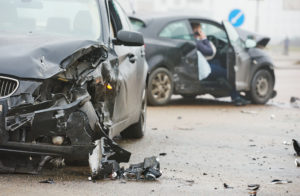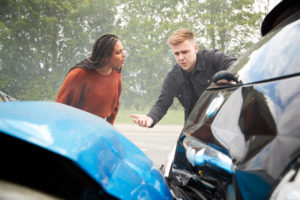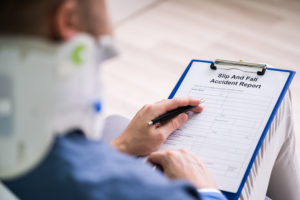The Rule of Seconds: How to Calculate Safe Following Distances
The typical response time for braking for a hazard is about three-quarters of a second. While individuals may show variations in their reaction times, maintaining a few seconds’ worth of safe following distance between your car and others is ideal. After all, car accident lawyers and insurance adjusters in Virginia both use the “rule of seconds” to evaluate fault in auto collisions.
The seconds between slamming your brakes and impact can mean the difference between a near miss and a life-changing collision. Your safe stopping distance depends on shifting factors: vehicle type, speed, road conditions, and reaction time. Inattention for even a moment can leave you unable to avoid a calamity.
The Pendleton Law Team is a personal injury law firm that specializes in Richmond car accident lawyer. Our guide below shares insight into maintaining safe following distances, how insurers assess rear-end liability, and your options after an abrupt braking accident. Arm yourself with the knowledge to prevent and prevail through these common yet catastrophic chain-reaction crashes.
Calculating Safe Following Distances Based on Vehicle Type
Staying alive means staying alert – and staying back. The one-second rule serves as the bare minimum gap for top reaction time. Need to know how to apply the Rule of Seconds? Our Richmond auto accident lawyers advise the following:
- Calculate it by picking a fixed object and counting the seconds between when you or the vehicle ahead of you passes it.
- Make sure to match the following distances to speed and conditions.
- Keep your eyes peeled for slowdowns, and always maintain focus.
- Begin counting the seconds it takes you to reach the same spot while driving.
- If you reach the fixed object before you have gotten to the right number of seconds, you’re following too quickly and closely and should adjust your speed.
Travler’s Insurance did a survey and found that the most common car accidents are rear-end collisions. By understanding and applying the “Rule of Seconds,” drivers can proactively contribute to road safety, reducing the likelihood of accidents and ensuring a safer driving experience for all.
What Is the Safest Following Distance for a Compact Car?
Even small compacts need room to stop safely. At 30 mph, a minimum two-second gap gives you over 100 feet of reaction space. High speeds demand more, so allow three to four seconds at 50 mph. Adjust for rain or darkness by adding another second’s cushion. Remember – distraction lands you in the backseat of the car ahead. So stay tuned in and back off.
What Is the Safest Following Distance for an SUV or Truck?
Bigger rides need bigger buffers. Double the two-second rule for SUVs and trucks, allowing at least four seconds between vehicles. These heavy haulers resist rapid stops, gaining momentum with size. Add more space in wet weather or lighter loads that could pitch and slide. Off-ramps also require extra vigilance to avoid tailgating. Give fellow motorists a generous gap!
What Is the Safest Following Distance for a Commercial Truck?
Sharing the road with an 80,000-pound big rig requires care and caution. Allow five to six seconds behind semi-trucks at highway speeds, even more in rain or snow. And don’t cut in without ample room. Be visible in side mirrors before passing. Following smart helps everyone arrive safely. You can’t afford distractions when tailing big rigs.
For those driving the truck, the Virginia Commercial Driver’s Manual advises that truck drivers driving 40 mph at most should maintain at least one second of distance for every 10 feet of vehicle length. If traveling over 40 mph, an extra second should be added for every 10 feet.
For a Free Legal Consultation
Call The Personal Injury Lawyer Hotline.
804-250-5050
How Is It Safe Following Distance Calculated in a Collision?
Ensuring safe following distances while driving is a paramount component when assessing liability in a collision. The “Rule of Seconds” is a valuable concept that aids in calculating how fast each car is going and if factors such as distracted driving, driving while impaired, or fatigued driving are a component.
While there isn’t a precise mathematical formula, the general guideline for calculating safe following distance involves the following considerations:
- Reaction time: The time it takes for a driver to perceive a hazard and physically react by applying the brakes is a critical factor. As stated previously, on average, it’s estimated to be around 3/4 of a second, but this can vary from one driver to another, so slower times will be investigated by insurance adjusters.
- Braking distance: This is the distance your vehicle travels while coming to a complete stop after you’ve applied the brakes. It depends on your vehicle’s speed, braking efficiency, road conditions, and tire grip. During collision assessments, your lawyer may hire an accident reconstructionist to demonstrate if defective auto parts are to blame for improper braking.
- Speed: The higher your driving speed, the longer the distance it takes to come to a stop. As a general rule, the faster you’re driving, the more space you should maintain between your vehicle and the one in front. Major impacts, skid marks, and severe injuries are all indicative of speeding car accidents.
- Road conditions: Wet, icy, or slippery roads can significantly increase braking distance. It’s important to account for adverse road conditions when calculating the following distance.
- Vehicle condition: The condition of your vehicle’s brakes, tires, and overall maintenance also plays a role in safe following distance. Well-maintained vehicles are more likely to respond effectively during an emergency stop. In trucking accidents, maintenance logs are generally assessed to ensure the truck is in safe working condition.
- Visibility: Poor visibility, such as following in a blind spot, fog, or nighttime driving, can reduce your ability to perceive hazards and react in a timely manner.
Let the Heavy Hitters® Take On Your Case 804-250-5050
What If I Collide With a Car After Practicing Safe Following Distance?
Determining fault in a car accident can be a complex matter and depends on the specific circumstances of the collision. If you were safely following another vehicle and still collided with it, liability may vary depending on the following factors:
Sudden and Unpredictable Actions
Suppose the driver of the vehicle in front of you made a sudden, unexpected maneuver or engaged in reckless behavior, and you had no reasonable opportunity to avoid the collision. In that case, the fault may lie primarily with the driver in front. This could include abrupt braking without reason, making an illegal U-turn, or other reckless driving behavior.
Distracted or Impaired Driving
If the driver in front was distracted, impaired (e.g., under the influence of alcohol or drugs), or otherwise negligent, they may be found at fault for the accident. Distracted driving, such as texting or using a phone, can be a significant factor in rear-end collisions.
Contributory Negligence
In some cases, both drivers may share some degree of responsibility for the accident. If you were following too closely, even though you believed it was a safe distance, you may be considered partially at fault. This concept is known as “contributory negligence.”
External Factors
External factors, such as poor road conditions, inclement weather, or mechanical failures, could contribute to an accident. In such cases, liability may be placed on factors beyond the drivers’ control.
Witnesses and Evidence
Eyewitness accounts, surveillance footage, and other evidence can play a significant role in determining fault. If there were witnesses who could attest to the events leading up to the collision, their statements could be vital in establishing fault.
Police Report
A police report, if one is filed, can be influential in determining fault. However, it’s important to note that the police report may not always be conclusive, and insurance companies and legal professionals may conduct their investigations.
To ascertain fault in such cases, insurance companies, legal professionals, and, if necessary, the courts may become involved. Suppose you believe you were following at a safe distance and were not primarily at fault. In that case, it’s essential to provide all relevant details to your insurance company and, if necessary, consult with an attorney to protect your rights and interests.
Central Virginia's Top Rated Personal
Injury Lawyers 804-250-5050
How Can an Attorney Accurately Calculate Safe Following Distance for Your Case?
Car accident lawyers for the Pendleton Law Team can accurately estimate the safe following distance for your case by considering various factors and utilizing expert knowledge to support your claims in the event of a personal injury or accident-related legal action.
Here’s how we can do it:
- Gathering evidence: An attorney will begin by gathering all relevant evidence related to your case. This may include police reports, eyewitness accounts, photographs, and any available surveillance footage. They will also collect data on road conditions, weather, and the specific circumstances leading up to the accident.
- Reviewing traffic laws: Your attorney will assess whether the accident involved any violations of traffic laws or regulations.
- Analyzing driver behavior: Our legal team will scrutinize the behavior of all parties involved in the accident. This includes assessing whether any driver was distracted, impaired, or engaged in reckless behavior that could have contributed to the accident.
- Expert witnesses: In some cases, our firm may consult with experts, such as accident reconstruction specialists or engineers, to provide a professional opinion on the safe following distance. These experts can analyze the specific details of the accident and provide valuable insights into fault and liability.
- Applying the “Rule of Seconds”: Our Virginia car accident attorneys can use the “Rule of Seconds” or similar guidelines to calculate an estimated safe following distance for your case. We will consider factors such as reaction time, braking distance, speed, and road conditions to determine if the distance maintained by all involved was reasonable.
- Proving negligence: To establish negligence, we will need to demonstrate that the at-fault party failed to maintain a safe following distance and that this failure directly contributed to the accident. We will present evidence that supports your claims and contradicts the opposing party’s arguments.
- Settlement negotiations and litigation: Armed with a thorough understanding of the facts, our attorneys can engage in negotiations with insurance companies or other parties involved to seek a fair settlement. If negotiations are unsuccessful, we will represent you in court.
By employing a combination of legal strategy, expert analysis, and a deep understanding of traffic laws and safety regulations, our law firm can accurately calculate the safe following distance for your case and advocate on your behalf to ensure you receive the compensation you deserve. Contact us if you need assistance providing safe following distance after a collision.
The Pendleton Law Team Is Here For You 804-250-5050



